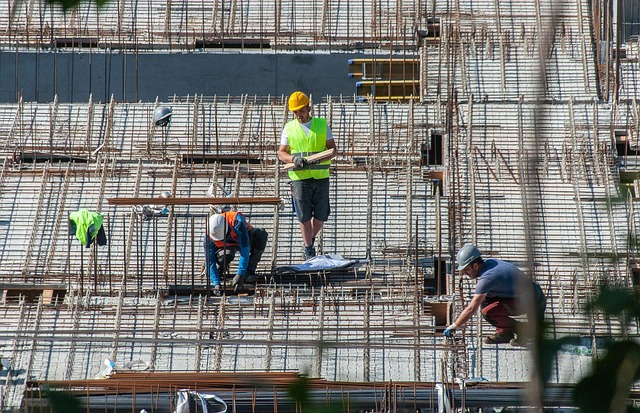3D simulations and virtual walkthroughs revolutionize structural and architectural coordination in design validation. They enable early identification of potential issues, meticulous examination of details, and real-time collaboration among stakeholders. These technologies streamline project timelines, enhance structural integrity, and promote aesthetic harmony, ultimately leading to improved client satisfaction.
In today’s digital age, design validation through 3D simulations and virtual walkthroughs is revolutionizing architectural processes. This article explores the power of these tools in ensuring structural integrity and refining architectural designs. We delve into how virtual simulations facilitate a deeper understanding of structural dynamics, while virtual walkthroughs offer immersive experiences for architectural critiques. Additionally, we discuss the coordination benefits that bridge gaps between structural and architectural aspects, enhancing collaboration among stakeholders.
Understanding Structural Integrity Through Virtual Simulation
In the realm of design validation, 3D simulations and virtual walkthroughs have emerged as powerful tools for assessing a structure’s integrity. These digital technologies allow architects and engineers to create detailed models of buildings, enabling them to test the structural soundness of designs before construction begins. By simulating various loading conditions, such as wind, earthquakes, or heavy traffic overhead, professionals can gain profound insights into how a structure will behave under stress. This process facilitates the identification of potential weaknesses in architectural coordination and ensures that every element of the design maintains its structural integrity.
Through virtual simulation, intricate architectural details can be scrutinized for their impact on overall stability. For instance, the placement of support beams, load-bearing walls, and connections between different components can be optimized to enhance the building’s resilience without compromising aesthetics. This level of digital scrutiny promotes a seamless blend of form and function, ensuring that final designs not only look stunning but also stand the test of time, literally.
Architectural Design Refinement: Walking Through Digital Models
In the realm of architectural design, refining concepts from mere drawings to tangible structures involves intricate structural and architectural coordination. 3D simulations and virtual walkthroughs offer a transformative approach to this process. By creating digital models that mimic physical reality, architects can meticulously examine every angle, light, and shadow within their designs. This immersive experience allows for immediate identification of potential issues with structural integrity, circulation patterns, or even aesthetic harmony.
Walking through these digital architectures enables designers to gain profound insights into how spaces will function and feel before any physical materials are laid down. Such simulations foster a deeper understanding of spatial dynamics, enhancing the coordination between architectural, structural, and often, mechanical systems. This proactive approach to design refinement not only streamlines construction but also ensures that the final product aligns seamlessly with the initial creative vision.
Coordination Benefits: Bridging Structural and Architectural Gaps
In the realm of design validation, 3D simulations and virtual walkthroughs offer unparalleled benefits for achieving structural and architectural coordination. By integrating these technologies, designers and architects can seamlessly bridge gaps between conceptual ideas and physical realities. This holistic approach ensures that every element, from structural integrity to aesthetic appeal, aligns perfectly from initial conception to final construction.
Virtual simulations allow for dynamic interaction and real-time testing, enabling practitioners to identify potential issues early in the design process. Through virtual walkthroughs, intricate architectural details can be meticulously examined, enhancing collaboration between diverse stakeholders. This comprehensive coordination not only streamlines project timelines but also results in more robust and harmonious designs, setting new standards for structural and architectural excellence.
Enhancing Collaboration: Real-World Implications for 3D Simulations
3D simulations and virtual walkthroughs have revolutionized design validation, fostering enhanced collaboration among diverse stakeholders in the structural and architectural coordination process. These immersive technologies allow for real-time interactions and feedback, breaking down communication barriers between designers, engineers, contractors, and clients. With 3D models, everyone involved can simultaneously view and interact with the digital prototype, ensuring a shared understanding of the design intent and identifying potential issues early in the development cycle.
This collaborative approach streamlines decision-making processes, as stakeholders can visually explore different design options, test functionality, and assess aesthetic appeal from the comfort of their workstations or even remote locations. This not only saves time and reduces costs associated with physical prototypes but also encourages innovative thinking by enabling a more comprehensive evaluation of complex designs. As a result, projects benefit from improved structural integrity, aesthetic harmony, and client satisfaction.
Design validation through 3D simulations and virtual walkthroughs offers a powerful toolset for achieving seamless structural and architectural coordination. By leveraging these technologies, designers can thoroughly understand and refine their creations, bridging gaps between structural integrity and aesthetic design. This enhanced collaboration and communication lead to more efficient projects, ultimately streamlining the path from concept to completion.
